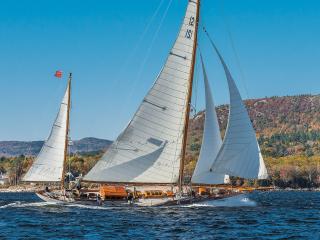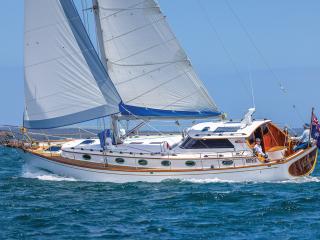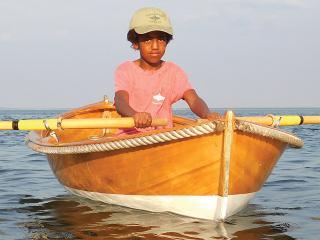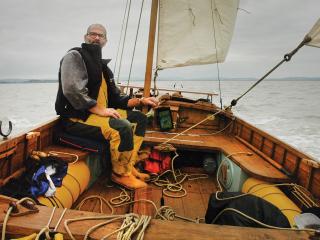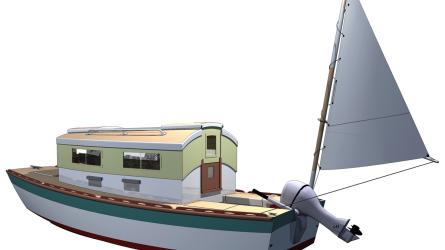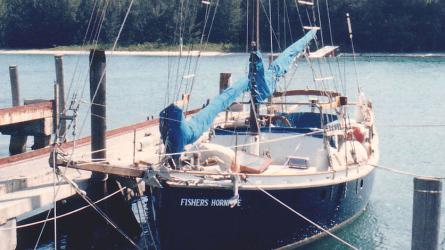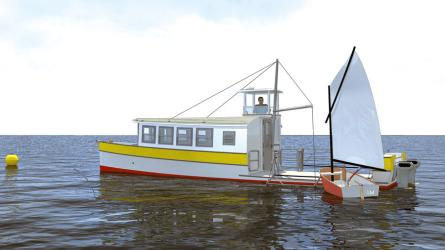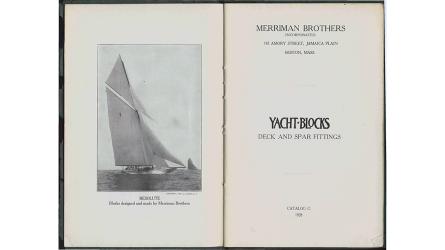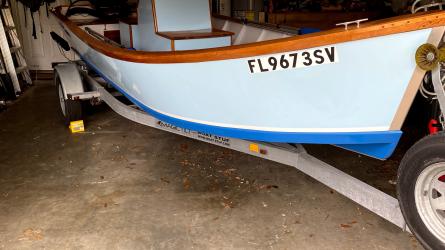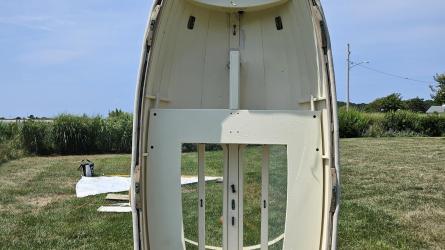May / June 2022
ALKA B
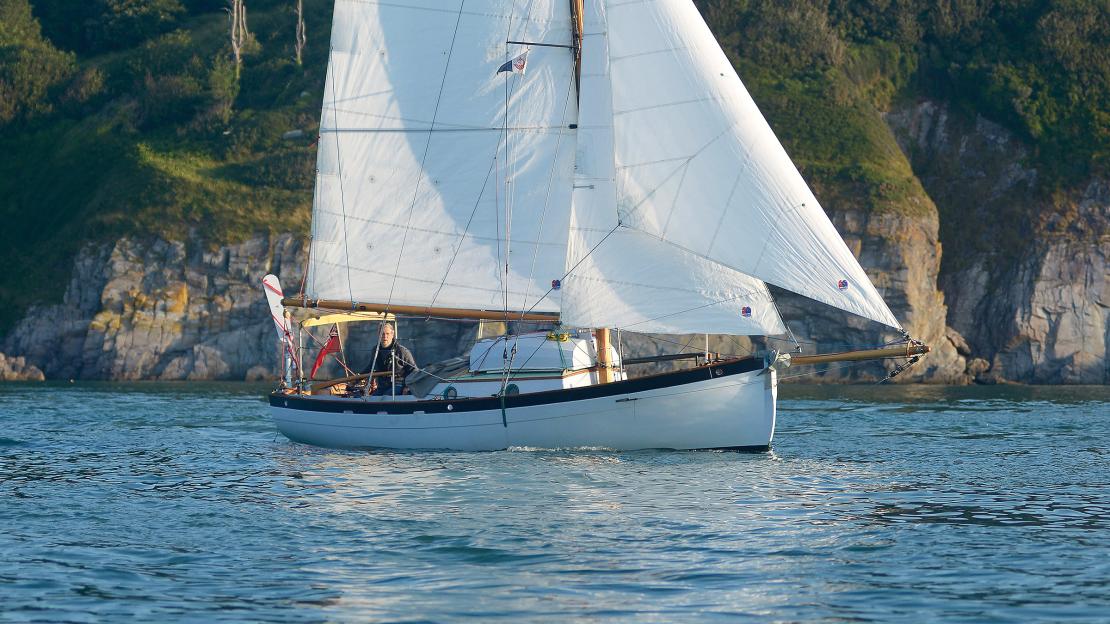
ALKA B is a 20’ gaff cutter designed by Paul Gartside and modified by her owner-builder, John Levell (inset), who has a background in high-tech aircraft and multihull construction. The boat’s “fat head” main echoes the geometry of a gaff rig while performing better upwind. Previous page inset—Levell has a background in high-tech aircraft and multihull construction, including Ellen MacArthur’s trimaran B&Q. Right—The inner planking was followed by two layers of cold-molded khaya, laid at 90 degrees to each other, and the entire hull was sheathed
in fiberglass.
I’m sitting in the cockpit of a pretty little 22' wooden cutter moored up in Dartmouth, on the southern coast of England. All around me are varieties of wood, lovingly fashioned into various components and finished off with an array of bronze and galvanized-steel fittings. Amidst this highly traditional boat setting, the conversation is rather surreal. The boat’s owner and builder, John Levell, is a structural engineer who has worked on a number of high-flying racing projects, calculating loads and stresses to create lightweight structures that fly across the water at more than 30 knots. Yet ALKA B, the boat he has built for himself, is a design based on working boats from more than a century ago that struggles to reach 6 knots on a good day.
The clues are there in the rig detail: most of the running rigging reeves through modern ball-bearing blocks; the deadeyes and lanyards are not made of wood and hemp but of aluminum and Dyneema; likewise, the shrouds are not made of galvanized steel or stainless steel but of Dyneema, too. And the mainsail—well, we’ll come to the mainsail in due course, but you might guess it’s not the regular gaff main you’d expect on a boat of this kind.
Like many engineers drawn to work on racing multihulls, John started his career working on aircraft before switching to yacht masts, where his knowledge of wing stresses meant he was able to push tolerances to the limit and design masts that were lighter than those of his rivals. Since setting up on his own in the late 1990s, he has worked on all manner of projects, from racing trimarans to sliding roofs on buildings.
To read the rest of this article:
Click the button below to log into your Digital Issue Access account.
No digital access? Subscribe or upgrade to a WoodenBoat Digital Subscription and finish reading this article as well as every article we have published for the past 50-years.
ACCESS TO EXPERIENCE
2-for-1 Print & Digital Subscription Offer
For this holiday season, WoodenBoat is offering our best buy one, get one deal ever. Subscribe with a print & digital subscription for $42.95, and we’ll give you a FREE GIFT SUBSCRIPTION to share with someone special.
1 YEAR SUBSCRIPTION (6 ISSUES)
PLUS ACCESS TO MORE THAN 300 DIGITAL BACK ISSUES
PRINT+DIGITAL $42.95
Subscribe
To read articles from previous issues, you can purchase the issue at The WoodenBoat Store link below.
 Purchase this issue from
Purchase this issue from
